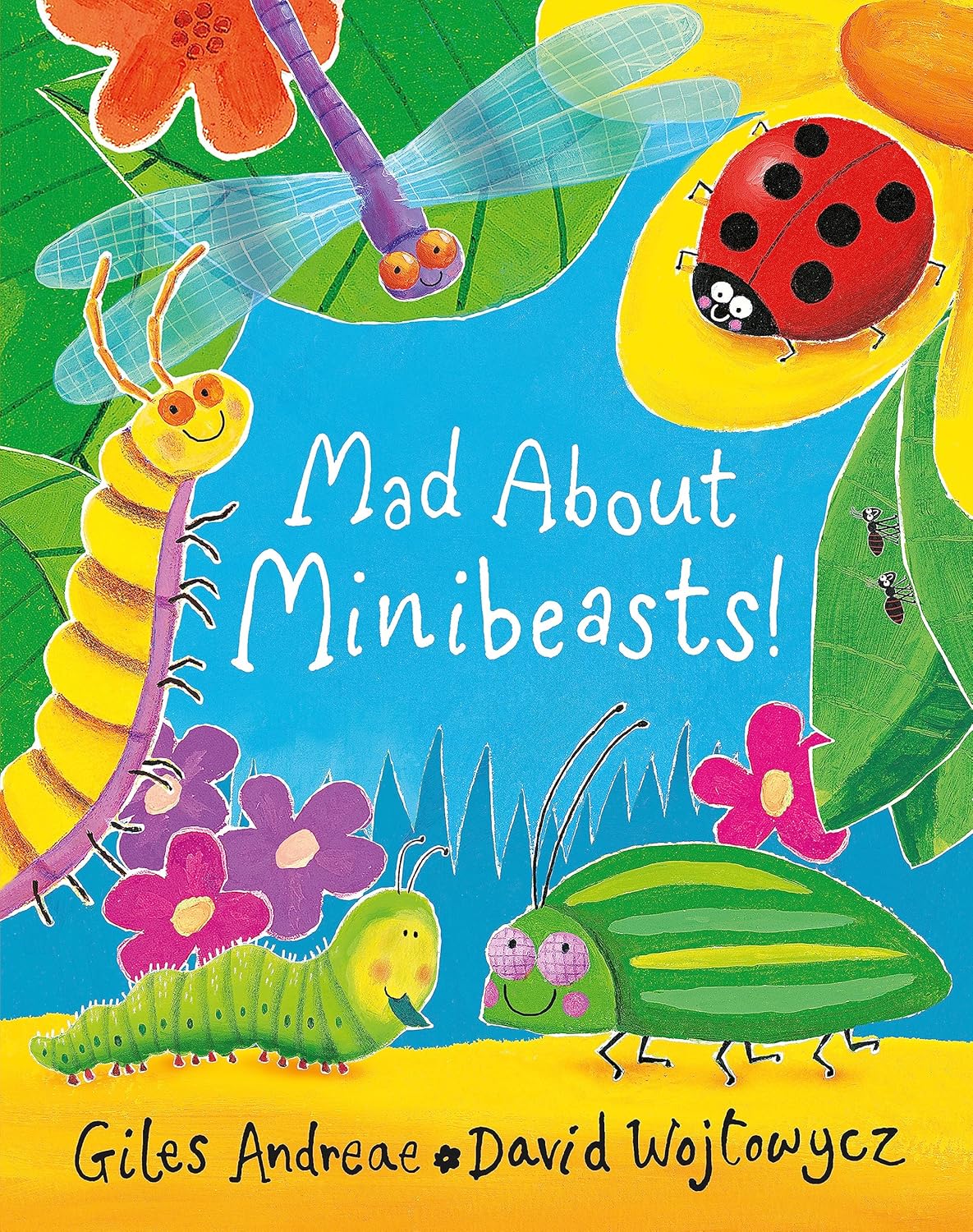Mad About Minibeasts!
- Brand: Unbranded

Description
Extension activities based on patterns, shapes, humanities and sciences could be prompted from this video.
This clip is relevant for teaching Music and Sciences at at Early Years Foundation Stage (EYFS) in England, Wales and Northern Ireland and Scotland. g. bow saw; hand saw; axe; potato peeler; fixed blade knife; loppers; secateurs, garden shears; hand drill; palm drill and screwdrivers etc, tool safety is of paramount importance so we decided to talk to the children about each tool that we use and showed them how to use each item safely and correctly (we also do this as a matter of routine before using each tool). We feel like we've gone a long way towards achieving this goal but we are always looking to improve, so if there's something you feel we can help you with or if you'd like to offer some feedback then please get in touch. It also suitable for teaching KS1 in England, Wales, and Northern Ireland and 1st level in Scotland. These simple, cheerful and humorous rhymes about all the familiar insects you might encounter in your garden - from slugs and snails to beautiful butterflies - are great fun to read together, and also make a good introduction to learning about the world around us.Once upon a garden time… To hold attention and help engage the children you can show pictures, images puppets or toys to represent Susie and the birds, flowers, trees, caterpillar, chrysalis, butterfly, jar, twigs, lettuce, leaves etc. A Cuddle For Claude was nominated for the Sheffield Book Award and Claude is now the subject of a popular animated TV series.
This is the perfect project for Spring and Summer, with lots of scope for play and investigation in outside spaces. Following on from this, we read our book of the week and let the children choose a minibeast to make for themselves using the various hand tools at their disposal. So, next time you’re out in the garden, or at the park, or at the beach, look under rocks, in bushes, on trees, or flowers, or the soil. Additional activities included creating mud minibeasts (some were done on the front gate), using magnets with various items to see which ones were magnetic, topping up the bird-feeder, a woodchip tea party and a minibeast/bug hunt with magnifying glasses.He has won the Federation of Children's Book Award and the Book Trust Early Years Award, but he is probably most famous as the creator of the phenomenally successful Purple Ronnie, Britain's favourite stickman. Minibeasts are small creatures that can be found in many different environments and they play a big part in habitat biodiversity. Two activity plans are laid out in detail for each area, and there is a book list to accompany the topic.
On this page you will find a brief list of ideas for activities to do with the topic, organised into the appropriate areas of learning. This successful author/illustrator pairing won the picture book section of the Children's Book Award with The Lion Who Wanted To Love. Synopsis: Children love the noisy sound words and looking at the colourful pictures, as they discover all sorts of minibeasts. We believe it's important that children learn how to respect and use real tools as they are more than capable given the opportunity (for further information on tool safety and storage at the nursery, please see our handbook: https://bit. This resource could be used to introduce new habitats and show how animals and plants exist in different environments.The site was created a few years back with the aim of becoming a high quality sparklebox alternative - helping teachers and parents to create exciting and inspiring learning environments for young children. She then invites the children to think about the minibeasts which don’t make a sound - worms, butterflies, spiders, slugs and snails - and to think about how they move. You are permitted to print, display, alter, transform or add to the digital version of the resource as long as it is not for commercial purposes. On second listening, encourage the children to retell the story using the props to help with the story sequence.
Early Learning HQ is home to thousands of primary school / early years teaching resources, some of which are completely free to download. If you have a lesson plan or activity that has worked well in your early years setting and you would like to share it with other practitioners then please get in touch, we’d love to hear from you. A collection of early years (EYFS) and key stage 1 (KS1) lesson plans and ideas relating to insects and minibeasts, ideal for using in your classroom or early years setting when looking at this ever popular topic.They must not be used for commercial purposes and you are not permitted to redistribute them in any way. Brightly coloured illustrations by David Wojtowycz add to the appeal of this engaging and lively book. Looking at minibeasts provides opportunities to learn about how we care for other creatures and for our environment, as well as plenty of counting and sequencing activities.
- Fruugo ID: 258392218-563234582
- EAN: 764486781913
-
Sold by: Fruugo
